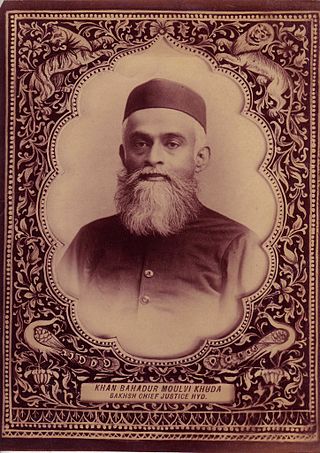
Jayaprakash Narayan Srivastava, also known as JP and Lok Nayak, was an Indian independence activist, theorist, socialist and political leader. He is mainly remembered for leading the mid-1970s opposition against Prime Minister Indira Gandhi and calling her overthrow in a "total revolution". In 1999, Narayan was posthumously awarded the Bharat Ratna, India's highest civilian award, in recognition of his social service. His other awards include the Magsaysay award for public service in 1965.

Bihar is a state in Eastern India. It is the third largest state by population, the 12th largest by area, and the 14th largest by GDP in 2021. Bihar borders Uttar Pradesh to its west, Nepal to the north, the northern part of West Bengal to the east, and Jharkhand to the south. Bihar is split by the river Ganges, which flows from west to east.

Darbhanga is the fifth largest city and municipal corporation in the state of Bihar in India, and is considered an important city in North Bihar. It serves as the headquarters of the Darbhanga district and the Darbhanga division. It is held that the name Darbhanga has been derived from Dwar Banga or Dari – Banga, meaning the 'door of Bengal'.
The Bihar movement, also known as the JP movement, was a political movement initiated by students in the Indian state of Bihar against misrule and corruption in the state government. in 1974. It was led by the veteran Gandhian socialist Jayaprakash Narayan, popularly known as JP. The movement later turned against Indian Prime Minister Indira Gandhi's government in the central government. It was also referred to as Sampoorna Kranti.

Anugrah Narayan Sinha, known as Bihar Vibhuti, was an Indian nationalist statesman, participant in Champaran Satyagraha, Gandhian & one of the architects of modern Bihar, who was the first Deputy Chief Minister and the Finance Minister of the Indian state of Bihar (1946–1957). He was also a Member of the Constituent Assembly of India, which was elected to write the Constitution of India and served in its first Parliament as an independent nation. He also held a range of portfolios including Labour, Local Self Government, Public Works, Supply & Price Control, Health and Agriculture. A.N. Sinha, affectionately called Anugrah Babu, was a very close associate of Mahatma Gandhi during the freedom struggle movement and worked with Bihar Kesari Sri Krishna Sinha to lead the Gandhian movement in Bihar. One of the leading nationalists in the Indian independence movement from Bihar after Dr Rajendra Prasad, he was elected as the Congress Party deputy leader in the state assembly to assume office as first Deputy Chief Minister cum Finance Minister of independent Bihar, and re-elected when the Congress Party won Bihar's first general election with a massive mandate in 1952.
Patna Science College, established in 1927, is one of the oldest science colleges in Patna, Bihar. It is affiliated to Patna University, and offers undergraduate and postgraduate courses in science.
The Nalanda Medical College and Hospital (NMCH) is a public medical college in Patna, Bihar, India. The institute was established in 1970 and is situated in Kankarbagh. It is a government-funded institute affiliated to Bihar University of Health science, Patna. It is recognized by Medical Council of India.

Kishori Sinha was an Indian politician, social activist, a lifelong advocate of women's empowerment and a former two-term Member of Parliament from the Vaishali constituency. She was married to the former Chief Minister of Bihar Satyendra Narayan Sinha, who was a seven-term Member of Parliament, from the constituency of Aurangabad. Her son Nikhil Kumar had served as the Governor of Kerala and Governor of Nagaland.

Anugrah Narayan College, Patna or A N College is a co-educational institution of the state of Bihar, India. It is located in Patna, the state capital city, on a 13 acres (53,000 m2) site. A constituent unit of Patliputra University, the college was established in January, 1956 and its first principal was economist Dr. Gorak Nath Sinha. The college has 22 Undergraduate departments and 23 Postgraduate departments. The college has been selected for Chancellor Award 2021 in Best College and Best Principal of Bihar.

Khuda Bakhsh Oriental Library is one of the national libraries of India, located in Patna, Bihar. It was opened to public on 29 October 1891 by Khan Bahadur Khuda Bakhsh with 4,000 manuscripts, of which he inherited 1,400 from his father Maulvi Mohammed Bakhsh. It is an autonomous organization under Ministry of Culture, Government of India, and is governed by a Board with the Governor of Bihar as its ex officio Chairman, and is known for its rare collection of Persian and Arabic manuscripts. It also hosts paintings made during the Rajput and Mughal eras of India.
Sir Ganesh Dutta Singh was an Indian lawyer, educationist and administrator during the British Raj. He did much to improve education and health services in the state of Bihar and Orissa before the independence of India from Britain.
Bankipur is a neighbourhood and residential area in Patna, in the Indian state of Bihar. It is located on the bank of the river Ganges. The prime attraction is the Khuda Bakhsh Oriental Library built by Khan Bahadur Khuda Bakhsh in 1891 and Golghar granary that was built by Captain John Garstin in 1786. Patna Dental College and Hospital is also located here.

Sachchidananda Sinha was an Indian lawyer, parliamentarian, and journalist. He was the first President of the Indian Constitutional Assembly which drafted the Constitution of India.
Sinha Library is a public library in Patna, India.

Sir Khan Bahadur Khuda Bakhsh OIE FRAS was an Indian advocate, judge, philosopher, revolutionary freedom fighter, scholar and historian from Patna, Bihar. He was the founder of Khuda Bakhsh Oriental Library and Chief Justice of Nizam's Supreme Court of Hyderabad from 1895 to 1898. Khuda Bakhsh maintains a strong legacy across the Islamic World for his contributions to Literature and History.

















